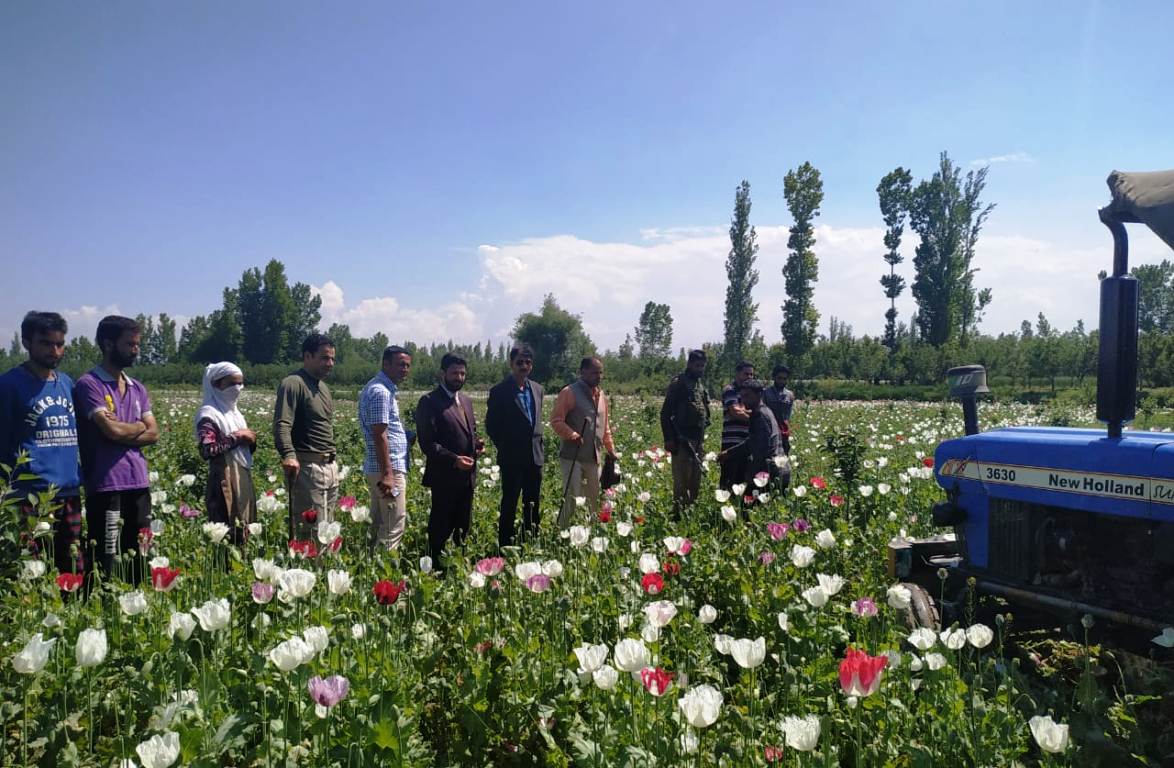by Khalid Bashir Gura
SRINAGAR: Dr Nazir Ahmad, a Kashmiri cancer research scientist was a part of WHO working group of 16 international experts from ten countries that met remotely at the invitation of the International Agency for Research on Cancer (IARC) to classify opium consumption as carcinogenic.

The Working Group evaluated the consumption of opium, an addictive narcotic drug.
“Opium consumption causes cancers of the larynx, lung, and urinary bladder,” the IARC said in a publication in the journal Lancet. Even though the authors of the Lancet said that “the evidence of it causing cancers of the oesophagus, stomach, pancreas and pharynx was “limited.”’
The evaluation applies only to opium, which is the minimally processed product derived from the juice (latex) of the unripe seedpod of the poppy plant. However, some opiates such as heroin, morphine, and codeine or synthetic opioids such as fentanyl are excluded from the carcinogenic classification.
“Opium has a complex chemical composition, comprising at least 25 alkaloids and other ingredients,” reads the article.
The classification of opium as carcinogenic applies to both ingestion and smoking, and to all forms of “minimally processed opium” that are consumed—raw opium, opium dross, and opium sap, reads the research paper.
According to the WHO, about five million people across the world consume minimally processed opium. “The Islamic Republic of Iran has the world’s highest per capita consumption and accounts for 42 per cent of the global consumption of minimally processed opium,” the IARC said. “Other countries with comparatively high opium consumption rates include Afghanistan and India.”
Further, according to the research paper, India is also one of the largest legal producers of opium wherein the states such as Rajasthan, Uttar Pradesh and Rajasthan grow opium legally—along with Afghanistan and Myanmar.
The opium consumption is a problem in many low-and middle-income countries, with strong implications for public health and society,” reads the article.
According to the article, “opium production and distribution have been controlled internationally since 1961. Opium is produced illicitly in approximately 50 countries worldwide, and global production has increased during the past decade.”
“Over 80 per cent of the world’s illicit opium comes from Afghanistan. Of the total opium produced, 15–20 per cent is used raw or minimally processed; the rest is processed into other opiates, mainly heroin,” the article reads.
In 2009, Iran, Afghanistan, and Pakistan were estimated to be the world’s largest per capita consumers of raw or minimally processed opium.
There is another study on pattern and prevalence of substance use and dependence in Kashmir with a special focus on opioids carried out by Dr Yasir Rather, Head of the de-addiction unit at Institute of Mental health and neuro-sciences in collaboration with world vision India.
The study focussed on Srinagar and Anantnag reveals the average monthly expenditure of one opioid user came out to be Rs 68626 which makes the daily expenditure as Rs 2287.5.
According to the study, opioid dependence poses a significant burden on the economy as the daily expenditure on the consumption of Opioid in two districts of Srinagar and Anantnag is Rs 37, 490, 329. The total prevalence of substance dependence in the two districts is 1.95 per cent and the total opioid dependence is 1.80 per cent.















